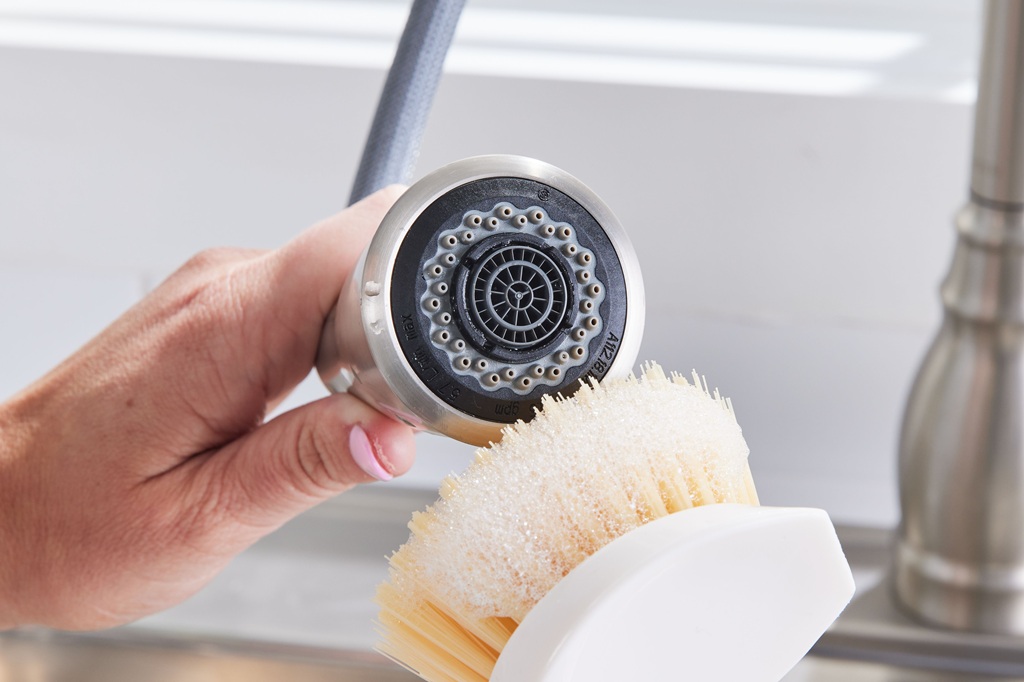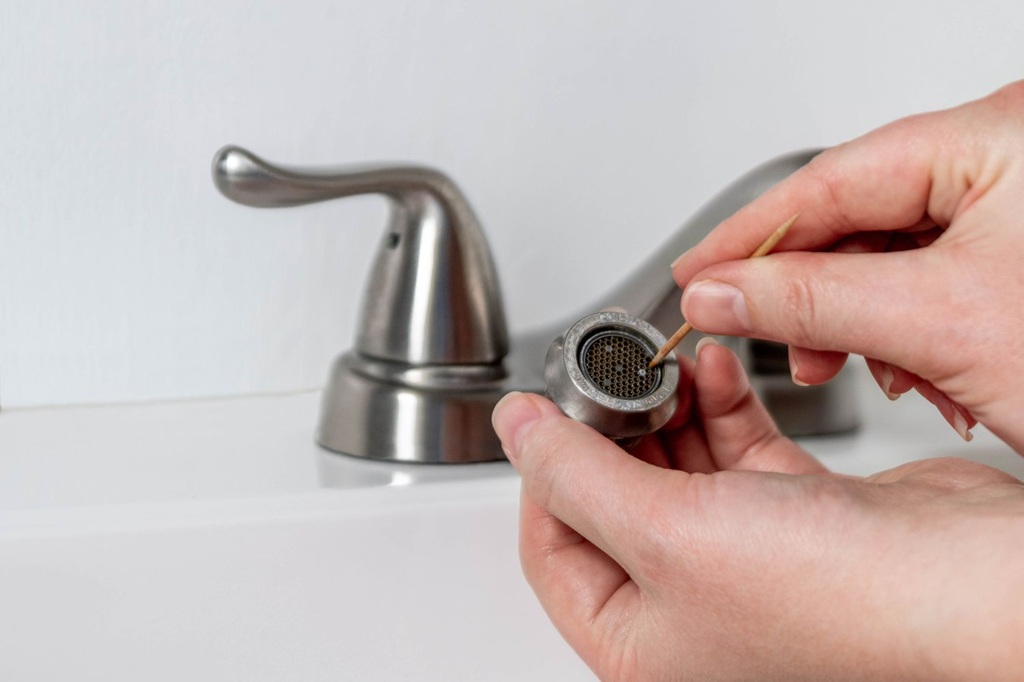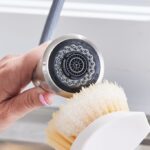
A clean faucet head ensures smooth water flow and prevents bacterial buildup. However, mineral deposits, grime, and mold can clog it over time. According to a study by the EPA, dirty faucets can harbor harmful bacteria, affecting water quality.
I once struggled with low water pressure until I realized my faucet head was clogged with limescale. After a deep clean, the difference was astounding! In this guide, you’ll learn proven methods to clean your faucet head efficiently.
Why Cleaning Your Faucet Head is Important
A dirty faucet head doesn’t just look bad—it can impact your health and water efficiency.
- Improves Water Flow: Mineral buildup restricts water pressure.
- Prevents Bacterial Growth: A CDC report states that moist surfaces breed bacteria like Legionella.
- Extends Faucet Lifespan: Regular cleaning prevents corrosion and leaks.
Neglecting faucet maintenance leads to costly repairs. Therefore, cleaning should be part of your routine.
Signs Your Faucet Head Needs Cleaning
How do you know when it’s time to clean? Watch for these signs:
- Reduced water pressure
- Uneven or splashing water spray
- Visible white or green deposits (limescale/mold)
- Metallic taste in water
If you notice these, follow the cleaning steps below.
Materials Needed for Cleaning a Faucet Head
Before starting, gather these supplies:
- White vinegar or lemon juice
- Baking soda
- A soft brush (toothbrush works)
- A plastic bag or bowl
- A toothpick or pin
- Microfiber cloth
Avoid harsh chemicals, as they can damage the finish.
Step-by-Step Guide to Clean a Faucet Head
1. Remove the Faucet Head
Most faucet heads twist off counterclockwise. If stuck, wrap a cloth around it for grip. Check the manufacturer’s guide if unsure.
2. Soak in Vinegar Solution
Fill a bowl or plastic bag with equal parts water and vinegar. Submerge the faucet head for 1-2 hours. Vinegar dissolves mineral deposits effectively.
3. Scrub Away Residue
After soaking, use a soft brush to scrub off loosened debris. For stubborn spots, apply baking soda paste (baking soda + water).
4. Clear Clogged Holes
Use a toothpick to unclog small holes gently. Avoid metal tools to prevent scratches.
5. Rinse and Reattach
Rinse thoroughly under warm water. Reattach the faucet head and test water flow.
Alternative Natural Cleaning Methods
If you dislike vinegar, try these:
- Lemon Juice: Soak in lemon juice for 30 minutes.
- Dish Soap Scrub: Mix with warm water for mild cleaning.
Both methods are eco-friendly and safe for most finishes.
Related: Fixing a Leaky Bathroom Faucet at the Base: A Step-by-Step Guide
How Often Should You Clean Your Faucet Head?

Experts recommend cleaning every 3-6 months. However, hard water areas may need monthly cleaning.
Preventive Tips to Keep Your Faucet Head Clean
- Wipe the faucet head weekly.
- Install a water softener if you have hard water.
- Use a faucet filter to reduce sediment buildup.
Conclusion
A clean faucet head ensures better water flow and hygiene. With simple steps and natural solutions, maintenance is easy.
Did this guide help you? Share your experience in the comments or explore more home cleaning tips!
FAQs
How do I clean a faucet head without removing it?
Soak a cloth in vinegar, wrap it around the faucet head, and leave it for an hour before scrubbing.
Can I use bleach to clean my faucet head?
No, bleach can damage metal finishes. Stick to vinegar or lemon juice.
Why is my faucet head still clogged after cleaning?
Hard water deposits may require longer soaking or a stronger descaling solution.
How do I prevent limescale buildup?
Regular cleaning and a water softener can minimize mineral deposits.
Can a dirty faucet head affect water taste?
Yes, mineral buildup and bacteria can alter water taste and quality.






